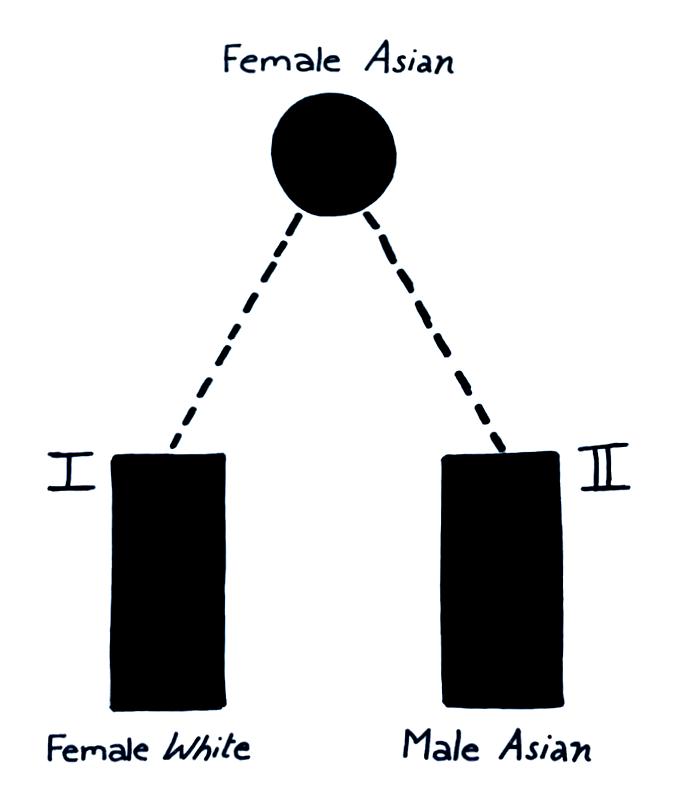Do It Yourself (I)
How to do your own cyranoid experiment

Note: to familiarise with ‘the cyranoid experiment’, first read HERE
How to get started
The idea and interest to write my Master’s thesis on the cyranoid method was originally sparked by the work of Dr Alex Gillespie, lecturing Professor in the department of Psychology and Behavioural Science (PBS) at the LSE.
About a month later, in May 2018, I had the opportunity to conduct my own small-scale cyranoid experiment in the Behavioural Research Lab (BRL) of the LSE. I collaborated and befriended with Jiawei Zhang, Master’s student in Organisational and Social Psychology.
Step 1: Choose your body & mind
In his original research proposal, Stanley Milgram expressed the idea to mix and match a male body with a female mind (and vice- versa) to examine how gender appearance might affect our impression. Yet, since his proposal got rejected, he never had the opportunity to put this idea into practice.
We took this idea as a starting point – only, with an additional twist: Instead of manipulating only the gender, we quickly came to the realisation that it would add relevance to our study if we succeeded in manipulating more than one social category, i.e. if we mixed and matched the gender and the ethnicity of body and mind.
In other words, we wanted to cross-combine different gender and ethnicity categories and recombine one mind with two different bodies.
This is how our 2 experimental conditions looked like:
| Condition | Body | Mind |
| I | Female White | Female Asian |
| II | Male Asian | Female Asian |
The clue lies in the combined manipulation of gender and ethnicity. In condition I body and mind share the same gender (both female) but have different ethnicities: the body is White and the mind is Asian. In condition II body and mind share the same ethnicity (both Asian) but have different genders: the body is male while the mind is female.

Step 2: Define your research goals
With these 2 experimental conditions in mind I defined my research questions:
► Does the body matter?
Note: When I speak of the “body”, I refer more precisely to a person’s physical appearance/identity. This includes static characteristics of the face and the body as well as dynamic characteristics such as facial expression, body language, gestures and posture.
► How does the physical identity of the body (in terms of its gender and ethnicity) change how naive participants perceive the overall person? How does a person’s ‘gender and ethnicity appearance’ affect impression formation?
i.e. will participants judge a person who is in a female, White body differently from a person who is in a male, Asian body?
► How does the crossing of gender and ethnicity categories activate stereotypes?
If stereotyping is evidenced, will it be based on gender or on ethnicity; or alternatively, will the crossing of gender and ethnicity activate new stereotypic associations?
N.B.: Jiawei’s research took a complementary path: she concentrated on finding out how someone in the role of ‘mind’ would adapt and change his/her talking behaviour to the type of ‘body’ he/she speaks for.
Step 3: How to come up with the right set-up
Finding a suitable set-up for our experiment turned out to be the trickiest, most tedious task.
In order to test the adequate equipment, we had to conduct two pilot studies.
The first pilot ‘failed’ because a key element of the experiment, ‘the cyranic illusion’, was undermined. What had happened?
We encountered severe problems with the ear-piece and radio receiver that were supposed to relay the mind’s voice to the body’s ear. As a consequence, ‘our’ bodies had trouble understanding the words that the mind spoke in the isolated room.
Hence, the bodies were ‘forced’ to guess words and repeated the mind’s words with severe time lags. Of course, during the post-experiment debriefing, the participants, who had been in a direct face-to-face conversation with the bodies, told us that they immediately had sensed that “something was strange and unusual”.
Hint n°1 : Equipment is key
When you plan on using the cyranoid method to study how people form impressions based on physical identity, you want to separate out the body and the mind of one individual and then recombine the body with the mind of another individual (“held constant”).
However, at the same time, you want to preserve an authentic, true-to-reality appearing interaction between the participants and their interlocutor (the cyranoid they face). You want participants to think they are talking to a ‘regular’, integral person and not to an artificial hybrid persona.
For this to work, it is indispensable that you create a ‘cyranic illusion’.
In turn, basically the whole ‘cyranic illusion’ relies on using inconspicuous (invisible) equipment to connect body and mind. That’s why, a whole lot of preliminary work just went into racking our brains on how to make ‘the cyranic illusion’ work in the first place.
Challenge: should you deceive people?
Using deception as an experimental method raises several ethical questions. Most of the controversial methods that Milgram and other scientists used in the 20th century would not even be authorised and approved today – on ethical grounds. For this very reason, before starting any experimentation, we had to get approval from the LSE’s research ethics committee.
Basically, deception means enticing people to participate in your study by telling them a lie or a prétext – which at first sight doesn’t sound like the right thing to do. But if you don’t do so, you may perhaps never be able to study certain socially relevant aspects of behaviour that can only be revealed or uncovered “if people are caught off guard”.
For instance, impression formation often involves stereotyping and prejudice and those aspects are clearly not deemed socially desirable. If people knew that a socially undesirable attitude or behaviour is being observed by the experimenter, they would alter their ‘natural/unconscious’ behaviour in a way that they look favourable to the experimenter (btw, this is called ‘the social desirability bias’).
“There is a world of difference between not telling subjects things and telling them the wrong things. The latter is deception, the former is not.”
Hey (1998, p.397)
If you tell participants in advance that in the experiment they will be in a face-to-face conversation with a person, they expect this to be the case.
If during the experiment the participants then ask that person (i.e. the body) questions and that person always replies with severe time lags (delays), the participants – for obvious reasons – start having suspicions. They start second-guessing the researchers’ true intentions.
If participants feel fooled by the researchers, they might even become resentful and react by consciously distorting their behaviour during the experiment to penalise the researchers, ultimately compromising the experimental data and conclusions.
Hint n°2: How to create an illusion
To overcome the issues we encountered with the malfunctioning ear-piece, we decided to conduct Milgram’s cyranoid method in an online setting, i.e. where participants, body and mind communicate online via a Skype video chat – something that had never been tried out before.

Our reasoning was as follows:
The advantage of an online over an offline (face-to-face) cyranoid experiment is that time lags can be attributed to technical problems and to a reduced Skype connection quality. So, the chances that participants will get suspicious and challenge the integrity of their conversation partner are much lower. In this sense a cyranoid experiment that is conducted online through video chat could potentially even reinforce ‘the cyranic illusion’.
Side note: Ordering a new, functioning ear-piece was not an option, since it would have cost several hundred euros, plus waiting for its delivery would have severely delayed the whole experiment.
Coming up
I talk in greater detail about the confederates and the procedure of my DIY cyranoid experiment and reveal the results and answers to my research questions.
Stay tuned! 🐧
Written and published September 2019
by Jessica
List of references I used in this article:
Corti K. & Gillespie A. (2015) Revisiting Milgram’s Cyranoid Method: Experimenting With Hybrid Human Agents, The Journal of Social Psychology, 155:1, 30-56, DOI: 10.1080/00224545.2014.959885
Feldmann J. (2018) The body matters: How gender and ethnicity cue person perception. Master’s Thesis
Hertwig R. & Ortmann A. (2008) Deception in Experiments: Revisiting the Arguments in Its Defense, ETHICS & BEHAVIOR, 18:1, 59-92, DOI: 10.1080/10508420701712990
Hey, J. D. (1998). Experimental economics and deception. A comment. Journal of Economic Psychology, 19, 397–401